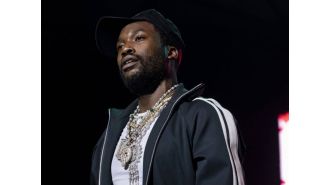Personal IPOs and stock market tickers
Eugene Wei had a post on his excellent blog yesterday where he drew parallels between individuals building brands on social media and a company going public.
One way to understand the impact of these public social networks on humanity is to think of this as the era in which humans took their personal thoughts and lives public at scale. Billions of humans IPO’d, whether we were ready for it or not, explaining why the concept of a personal “brand” became such a pervasive metaphor.
In another era, most of us lived in social circles of limited scope. Family, school, coworkers, neighbors. We were, for the most part, private entities. Social media companies quickly hit on the ideal configuration for rapid network growth: take the interaction between any two people and make it public. Conversation and information-sharing became a democratic form of performance art.
One reason social networks quickly converged on this as the optimal strategy and configuration is that the majority of people on any social network merely lurk. By making the conversations of the more extroverted, productive nodes public, you sustain the interest of that silent majority of observers with what is effectively crowd-sourced (read: free) content. The concept of 1/9/90 is that a stable equilibrium can be achieved in a large network if the shouting class, the minority which entertains the much larger but silent majority, is given enough quantifiable doses of affirmation (likes) to keep the content spigot flowing. As these large public social networks grew, even many who were previously modest began taking the stage on social media to karaoke to the crowd. Live fast, die young, and leave a viral post.
Just as there are many advantages to being a public company, becoming a public figure carries all sorts of upside. Once your ideas and your self are traded publicly, anyone can invest and drive the value of those goods higher. If you’ve ever written a viral blog post or tweetstorm and gained thousands of followers, if you’ve had a YouTube video picked up by traditional media and found yourselves interviewed on the local news, you’ve felt that rush of being a soaring stock. Social networks not only provide public liquidity for anything you care to share on them, but they also continued to tweak their algorithms to accelerate the virality quotient of their feeds. In a previous generation, Warhol quipped the duration of sudden fame was 15 minutes, but social media has made that the time it takes to become famous.
The problem is that, like many private companies who find the scrutiny of public markets overly stringent, many of us were ill-equipped for “going public” with what were once private conversations and thought. It’s not just those who made enormous public gaffes and got “canceled.” Most people by now have experienced the random attack from a troll, the distributed judgment of the public at large, and have realized the cost of living our lives in public. Most celebrities learn this lesson very early on, most companies put their public-facing executives through PR training, but most humans never grew up under the watchful gaze of hundreds of millions of eyes of Sauron.
It is a powerful analogy and it made me wonder about Instagram’s recent decision to remove “like” counts. If an Instagram profile is the equivalent of a stock ticker, a “like” may have been the equivalent of the stock price.
And, as there’s only so much good that can come from constantly monitoring short term fluctuations on your stock price, removing “like” counts may turn out to be a master stroke.






